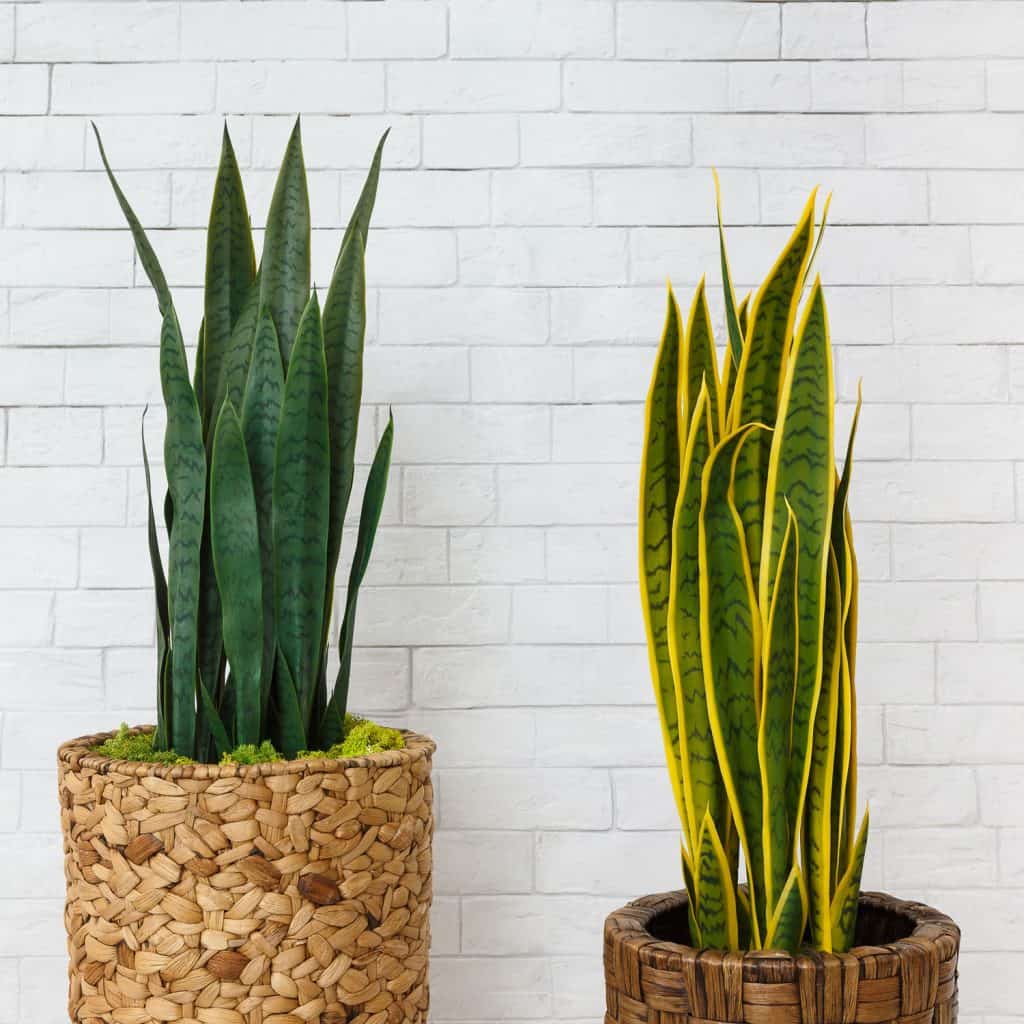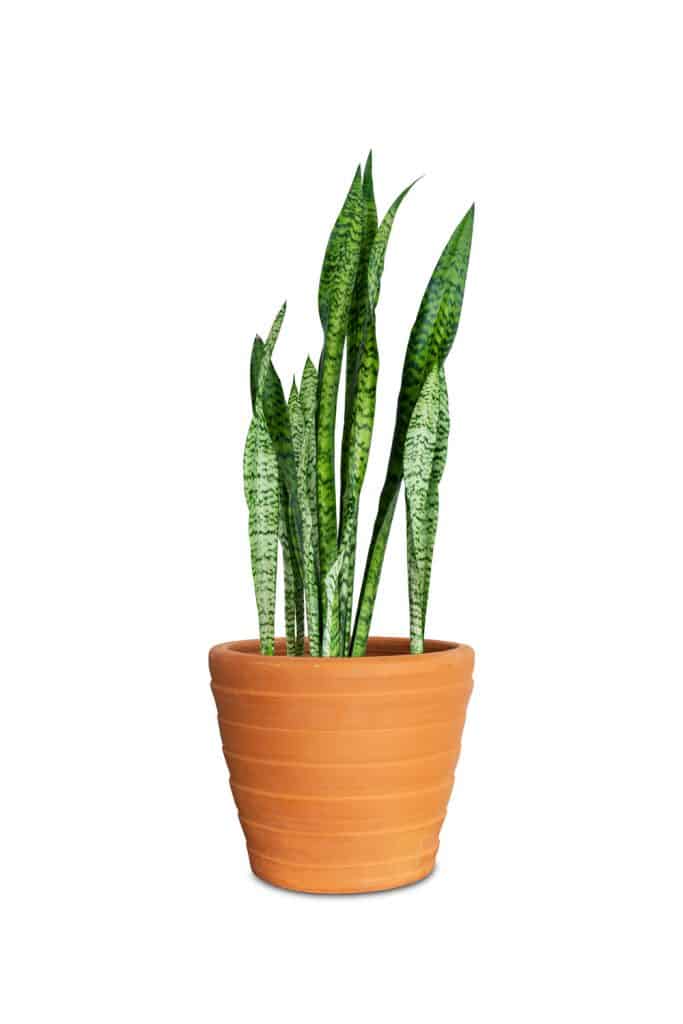Dive into the world of snake plants, affectionately known as "Sansevieria," and discover an extraordinary addition to your indoor garden.
With their alluring aesthetics and sleek modern appeal, they make a delightful centerpiece for any tabletop display and effortlessly uplift your living space.
If you are intrigued by these unique indoor ornaments and considering inviting one into your home, you might be curious about their growth patterns.
How tall do they get? How quickly do they grow? This post aims to unravel these botanical mysteries and equip you with essential insights on their upkeep.
Compared to other plants, snake plants are known to be fairly slow growers. A healthy snake plant can grow up to 8 feet high when grown indoors and 12 feet when planted outdoors. The entire plant's width can range anywhere from 6 inches to 3 feet, depending on its height. These plants can grow anywhere from 10 inches to 24 inches per year.
The tempo and trajectory of your snake plant's growth journey hinge on several key factors. Think of light exposure, watering habits, and soil composition as the holy trinity of snake plant care.
Providing your plant with these fundamental needs will unlock its full potential and keep it in a state of flourishing growth.
Immerse yourself further in the world of snake plant care by continuing to read. Learn to master the art of fostering this fascinating green gem in your home garden.

Care Considerations For Optimal Snake Plant Growth

Temperature
Snake plants prefer hot, dry environments. You can also place a potted snake plant outside or on a window ledge if you live in a relatively warm area such as California or Florida (where the winters aren't harsh).
If you have a garden in your backyard, it will also be a great place to grow a snake plant, as long as the temperature doesn't dip below 50 degrees Fahrenheit for more than a day or two.
Light
Snake plants aren't necessarily picky about their lighting. They can grow in almost any level of light from high to low, but it's best to keep them away from strong direct sunlight for long periods of time.
Doing so can cause their leaves to burn, particularly when they are left on window sills or planted in outdoor gardens.
If you set the plant near a window, the ideal spot would be about 8 to 10 feet away from a window south or west-facing window.
Fertilizer
These plants don't require much fertilizer, except when they are in an unhealthy state and need to be revitalized with nutrients immediately.
You can use cactus fertilizer or any other type of succulent fertilizer on your snake plant with a 10-10-10 NPK (Nitrogen, Phosphorous, Potassium) ratio.
If you fertilize your snake plant, it's best to do so in the spring or the summer—never fertilize them in the winter. Fertilizing no more than twice a year should suffice.
See this fertilizer on Amazon.
Soil
A well-draining potting mix is the best medium for your snake plant. You can also use all-purpose cactus soils or other commercial indoor soils for succulents.
The best soil mix for your snake plant is one that easily rehydrates with a single watering session and drains quickly. The extra air pockets in the loose soil will keep the plant from becoming overwatered.
Water
Watering your snake plant properly is the most important factor in its survival and overall health. The biggest issue new snake plant owners often have is that they tend to overwater these plants when they first get them.
Snake plants prefer to dry out between their water and sessions. If you stick your finger in the soil a few days after watering the plant and it is a bit crumbly, that's completely fine. These plants can go for days and weeks without water!
You typically won't need to water your snake plant more than two or three times a month for it to thrive. The soil must dry out a bit before the next watering to prevent the plant from getting root rot.
Snake plants are more susceptible to root rot due to their minimal water requirements. If your plant does develop root rot, you'll know it, as the leaves will start to turn yellow and may begin to bend a little, whereas before, they'd stand stiff as a board.
Pests
For the most part, snake plants are more pest-resistant than your typical indoor plants. However, if kept in poor conditions or planted outdoors, they can become susceptible to infestation by spider mites and mealybugs.
Spider mite infestations are easy to spot as you will begin to see white spots and webs form on the plant's leaves.
Mealybugs will eat away at the foliage of your snake plant, eventually causing it to wilt and die if not treated.
To rid your snake plant of infestations, you can use several pesticides or neem oil. You can also use rubbing alcohol to remove the bugs from the foliage.
Re-potting
As mentioned previously, snake plants are slow growers, which means that they don't need to be repotted as often as other indoor plants may.
On average, your snake plant may only need to be repotted every 4 to 10 years. If you keep your snake plant in an area with an ample amount of bright light (which speeds up its growth), you may need to re-pot it every 2 to 6 years.
The best time to repot your snake plant is in the spring before starting its new growth cycle. Also, whenever you re-pot your snake plant, you will need to add a fresh soil mix.
Best Plant Pots for Snake Plants

Snake plants prefer sturdy, fast-draining pots. We have rounded up a few of the best plant pots for snake plants. Check them out below.
Mkono Plastic Planters with Saucers
This Mkono planter has a minimalist design that can go perfectly with your slim snake plant to complement a modern or contemporary look.
It includes a set of five pots, all of which are lightweight but made from sturdy polypropylene. This material is known to stand up to wear and tear, particularly from animals and children.
These pots have the perfect draining system for your new snake plant and come with removable rubber plugs to catch excess water.
If you are looking for a simple and affordable pot for your snake plant, these five and six-inch pots will work perfectly.
Homenote Pots for Plants
The Homenote pot set is one of the best sellers on Amazon when it comes to indoor plants.
These pots feature a multi-hole drainage design that is guaranteed to keep your snake plant free from over-watering issues such as mold, root rot, and mildew. They're made of non-toxic and odorless plastic.
The pots are very durable and will not break or warp when exposed to direct sunlight. This means that they can safely be placed outside on a back patio or an office window sill.
The height of the pot set ranges from 4 inches to 6 inches, which is perfect for the slow-growing snake plant.
Exquis Home 2-Pot Set
The 2-pot set by Exquis Home is another bestseller on Amazon and a great fit for your snake plant.
These modern ceramic pots are hand-painted with grey and gold details and are perfect to place on a window sill, on a mantle, or in the center of a dining table. Both pots come with pre-drilled drainage holes and plugs to ensure fast and efficient water drainage.
The pot set is sturdy, durable, and designed to last the entire lifetime of your snake plant (which can be anywhere from 15 to 20 years). T
hey can be placed indoors or outdoors, and their heights are 5 inches and 6 inches, making them a great fit for small snake plants. They also come with a 30-day money-back refund.
Why Is Your Snake Plant So Short?
If your snake plant is short, don't fret. Snake plants are notoriously slow-growing plants. Their prime growing time is the spring and summer months, so you will see more growth during this time.
The main factors that contribute to the growth of your snake plant are direct sunlight and re-potting.
Other than ensuring that your plant has an ample amount of sunlight daily and repotting it as needed, the only other thing you can do is be patient and wait for it to grow. It'll get there.
Do Snake Plants Have Babies?
Yes, snake plant cuttings can be made to propagate the plant. The easiest way to do this is through its offsets, which are the baby plants at the base of the snake plant.
These "babies" can be cut off and placed in soil to create new snake plants from the parent plant.
How Do You Encourage Your Snake Plant To Grow?
The best way to encourage your snake plant to grow is to re-pot it as the plant grows larger and to give it an ample amount of direct sunlight daily.
Snake plants grown indoors will grow a bit slower than they will outdoors. So the more sunlight your plant receives, the better.
Re-potting your snake plant as the roots begin to crowd in its pot will guarantee that the roots will continue to grow. The larger the roots grow, the larger the plant will grow.
Do Snake Plants Like Small Pots?
Snake plants prefer whatever pot size will keep their roots fitting snuggly inside. If the plant is small, then a small pot would be ideal.
However, if you are looking to grow the plant, then the pot size will naturally need to increase a few inches as the roots grow longer.
Do Snake Plants Like To Be Crowded?
Snake plants prefer to be crowded but can survive when the roots aren't crowded.
However, they may not grow as tall as plants with a more crowded root system. The snake plant roots will typically become crowded in the winter after the spring and summer growing seasons.
Wrapping Things Up
Snake plants are one of the easiest indoor house plants to take care of. The most important thing to remember when caring for a snake plant is that it can survive for quite a while without water.
Be sure not to over-water your snake plant as it can place stress on the plant and several issues. Snake plants thrive on neglect. So if you are new to owning indoor plants or who keeps a busy schedule, this may be the perfect plant for you.
Before you go, be sure to check out our other posts:





